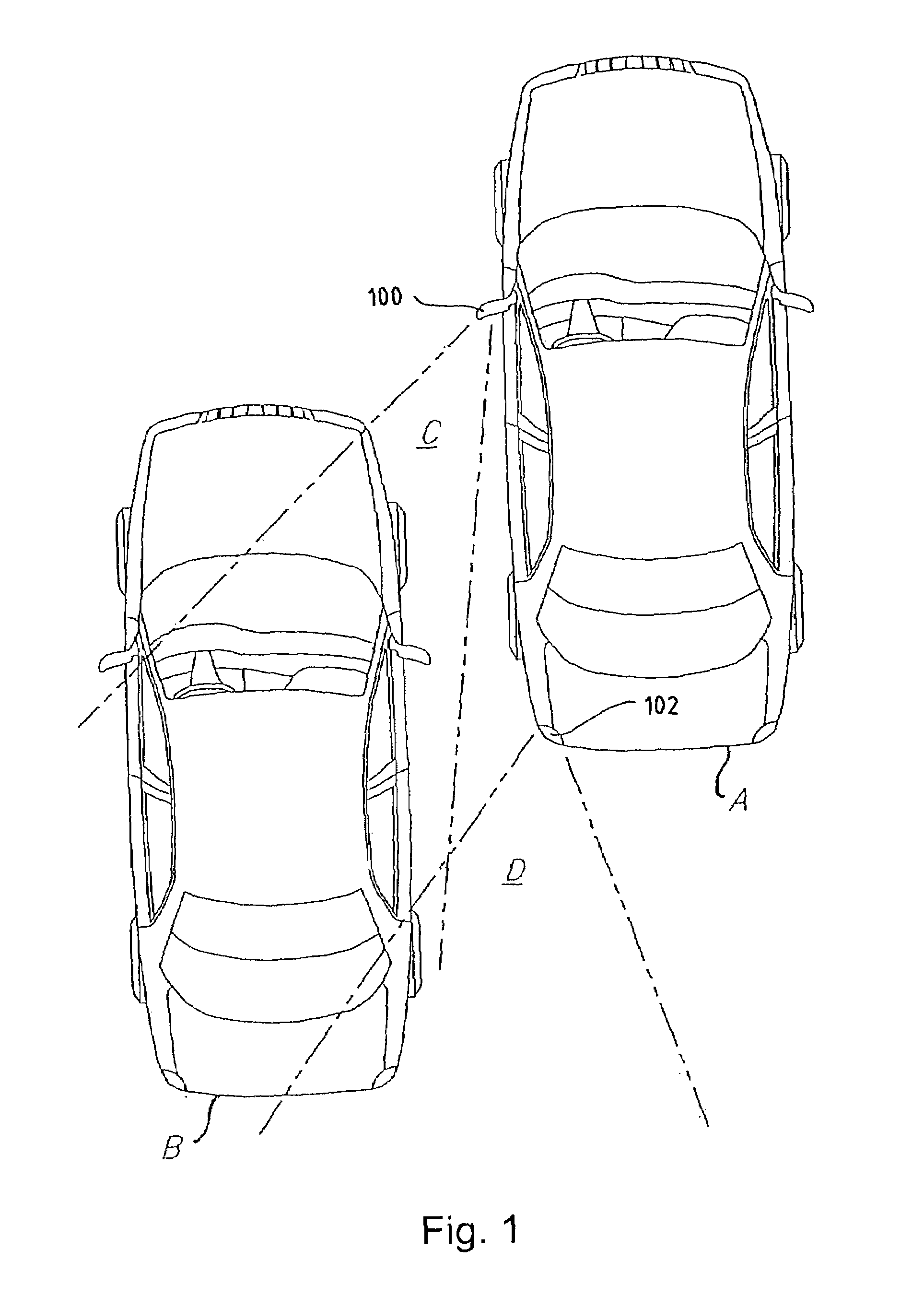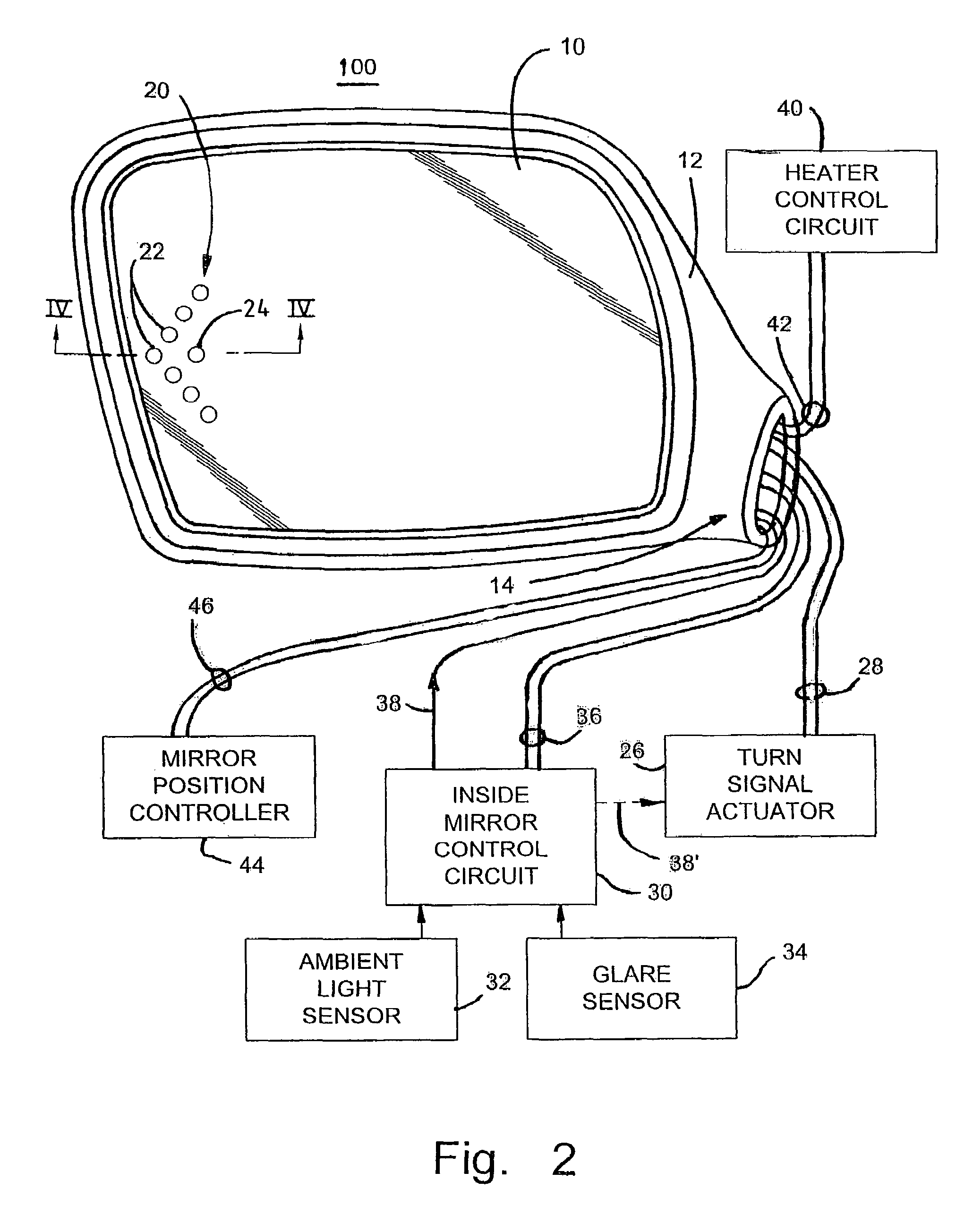Rearview mirror assembly construction
a rearview mirror and assembly technology, applied in the direction of printed circuit non-printed electric components, printed circuit boards, instruments, etc., can solve the problems of difficult mounting of leds at the appropriate angle, affecting the performance of turn indicators, and leds being prone to bending and breaking, so as to increase the adhesiveness of the encapsulating material
- Summary
- Abstract
- Description
- Claims
- Application Information
AI Technical Summary
Benefits of technology
Problems solved by technology
Method used
Image
Examples
third embodiment
[0064]The printed circuit board 206 of the third embodiment preferably includes a pair of conductive tracings 236a and 236b, which extend from locations approximate the corresponding pins of connector plug 208 to conductive clips 216a and 216b, respectively. Further, a pair of conductive tracings 238 may extend from the location underlying plug 208 to the plurality of LEDs 250 mounted on the forward surface of circuit board 206. Current limiting resistors (not shown) to be coupled to LEDs 250 can be either surface mount components or carbon ink resistors. The die of a reverse protection diode could also be placed onto the copper circuitry to protect from backpowering the wire harness from LEDs 250 from improper electrical connection.
[0065]FIG. 12 shows an alternative technique for forming an LED 250 directly on the forward-facing surface of a flexible printed circuit board 206. As shown, LED 250 includes an LED chip 252, which again is surface mounted directly on the forward-facing ...
fourth embodiment
[0067]FIG. 13 shows a cross-sectional view of the present invention whereby an LED device 250 is mounted to the rear surface of a circuit board 206, which again is preferably a flexible circuit board. To allow light to pass through circuit board 206, an aperture or other transparent region 270 is provided in circuit board 206 in the area in front of LED 250. This substantially transparent region or window 270 may have a diffusant dispersed integrally therein or may have a roughened surface so as to diffuse the light from the LED device 250. An aperture 248 may be formed in carrier plate 240 to accommodate the height of LED 250 extending rearwardly behind the rear surface of printed circuit board 206. In the embodiment shown in FIG. 13, an optical deviator film 272 is provided over the transparent region 270 of circuit board 206 and in front of LED 250. In this manner, LED 250 may be mounted with its optical axis normal to the printed circuit board 206 with the optical deviator film ...
PUM
 Login to View More
Login to View More Abstract
Description
Claims
Application Information
 Login to View More
Login to View More - R&D
- Intellectual Property
- Life Sciences
- Materials
- Tech Scout
- Unparalleled Data Quality
- Higher Quality Content
- 60% Fewer Hallucinations
Browse by: Latest US Patents, China's latest patents, Technical Efficacy Thesaurus, Application Domain, Technology Topic, Popular Technical Reports.
© 2025 PatSnap. All rights reserved.Legal|Privacy policy|Modern Slavery Act Transparency Statement|Sitemap|About US| Contact US: help@patsnap.com



